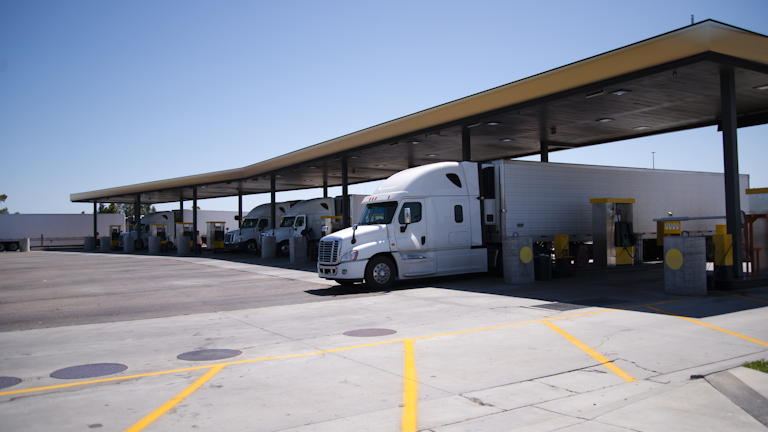- Operator safety. Employers are carefully considering how to keep their operators injury-free, so avoiding accidents around the truck is just as important as on the road. Proactive measures on a work truck can include installing safety steps and grips so that the operator can maintain “three points of contact” at all times when entering and exiting the vehicle. At Reading, we’ve begun to see these concerns migrate from the very largest fleet operators and governments, into corporations and vocational fleet buyers.
- Visibility. Keeping the truck and its surroundings well-lit and visible helps protect workers from accidents on the side of the road and keeps crews productive when they’re working after sundown, especially in the winter months.
- 360° coverage. Chassis OEMs are bringing safety innovations like 360° cameras, and accident-avoidance technologies like collision warning, automatic emergency braking, adaptive cruise control and blindspot monitoring, which used to be only on luxury cars, into the commercial truck segment. For example, every Ford Transit is now shipping with lane-departure warning and forward-collision warning camera systems.
- Securing tools and gear. A typical work truck now provides at least two layers of ‘locking’ protection. Compartment doors will use power locks or three-point locking for additional points of contact and pry-proofing. And these measures can be augmented with a “bar lock” or master locking feature, where a single padlock can secure all of the compartment doors to keep tools and equipment safe. Additionally, Reading’s remote keyless entry locking system, called Latch-Matic, can now be integrated with the power locks on the chassis. A driver can now lock and unlock both the body and chassis with a single key-fob. Using just the chassis fob, for example on a Ford Super Duty or Ford Transit, gives our customers the convenience they have been asking for.
- Ergonomics. For better ergonomics, handles and steps are no longer considered a special add-in, they’re becoming a standard offering across the board. As an example, fixed steps that don’t have to be manually unfolded by the operator will help meet evolving safety requirements and might even lower insurance costs.
By James Muiter, Product Line Manager, Reading Truck Group as published in Fordpros magazine







